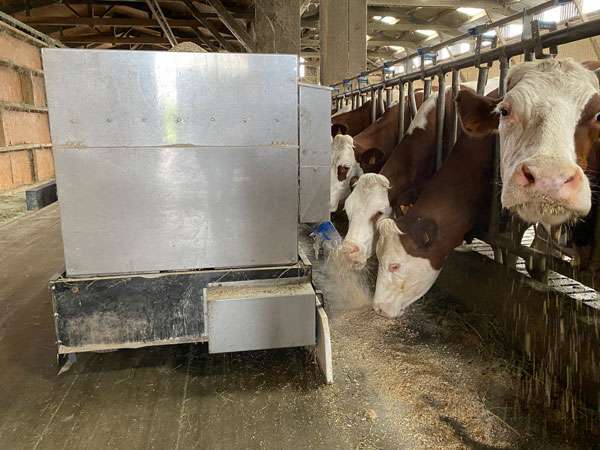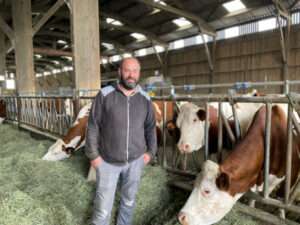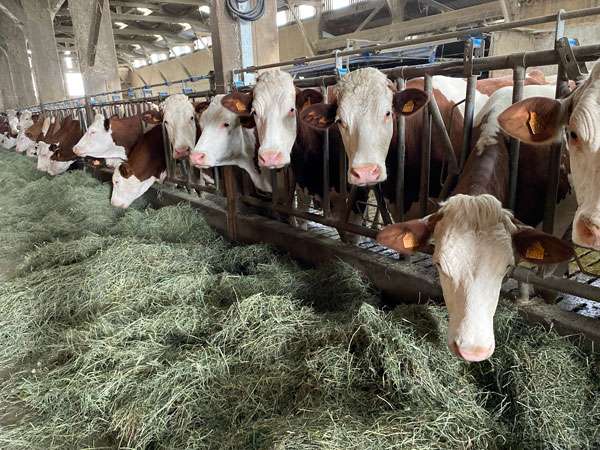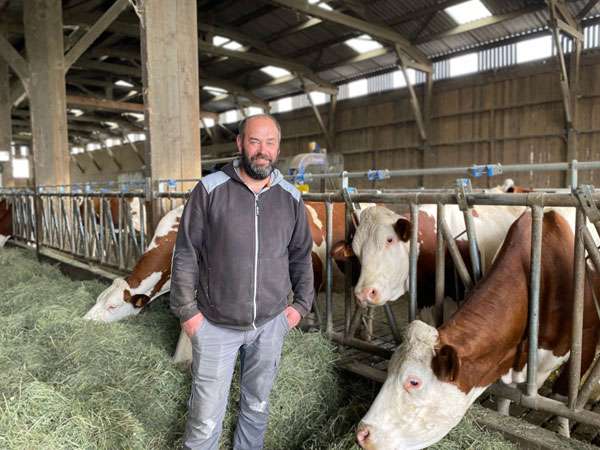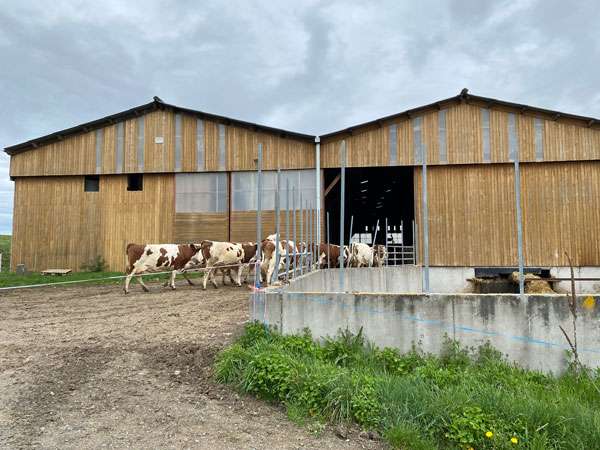Nicolas and Jean-François set up their family farm in Saint-Flour center of France in 2007, and were fed up with silage, so they quickly decided to switch to barn drying hay system. A new 65 m long, 35 m wide building was therefore built in 2010. It was an opportunity for them to rethink the way they operated. As they had not automated milking, they decided to automate part of the feeding process to make their work less arduous. Before using an M7 robot, the two brothers used to feed concentrates by hand. "We had a big wheelbarrow that weighed a lot, especially when you're distributing 3kg of feed per cow! Multiplied by 90 cows, that's 270 kg to push. What's more, the floor was slippery, which was a real pain. Especially as we already have shoulder problems due to the repetitive movements involved in milking", explains Nicolas.
When the time came to choose, several solutions were considered. "We could have bought an Automatic Concentrate Dispenser (ACD), but I find that it excites the cows a bit. It focuses on a corner where the cows eat all the time", recalls the farmer. As well as improving their working comfort, they also needed a system that would allow them to push the fodder back. This dual need naturally led them to the M7, a 2-in-1 machine that is both a wire-guided automatic concentrate dispenser and a forage pusher.
Concentrate distribution by batches
"The M7 enabled us to automate part of the feeding process at reasonable cost, in line with our hay farming system", explains the Montbeliarde breeder.
Another factor that tipped the balance in favour of the Lucas G System M7 was the possibility to distribute the feed in batches.
"We have two compartments in the robot because we have 2 milking batches in winter. Depending on the batch, we don't have the same quantities of concentrates or the same feed formulas. Today, we potentially have 3 batches and we could even use more. We have a batch of cows at the start of lactation, a batch at the end of lactation and, depending on requirements, a batch of dry cows", explains the farmer.
"This method of working in batches enables us to rationalise our concentrates in winter. And in summer, as we have a much higher ration of cows on pasture, we only have one batch, with no supplementation for the big dairy cows, because we think they're big enough to complement themselves on their own", he adds.
Here, the M7 is programmed to make 12 passes a day: hay pushing and distribution passes. Nicolas and Jean-François take care not to distribute hay to the animals when the robot is feeding concentrates.
Well-oiled organisation
"In the morning, we start milking at 7am. So we programme the robot to come in earlier, at 6.30am. Because as soon as the cows hear it, they come towards it. So when we arrive for milking, all the cows are up. The last thing we wanted was to have to lift a cow into a cubicle. When we arrive to milk, all the cows have to be on the slatted floor so we don't waste any time. That way, all we have to do is close the gates and 5 minutes after arriving, we can start milking. And if there's one in a cubicle, it's because it may be sick. The M7 allows us to do all this work on our own", explains Nicolas.
